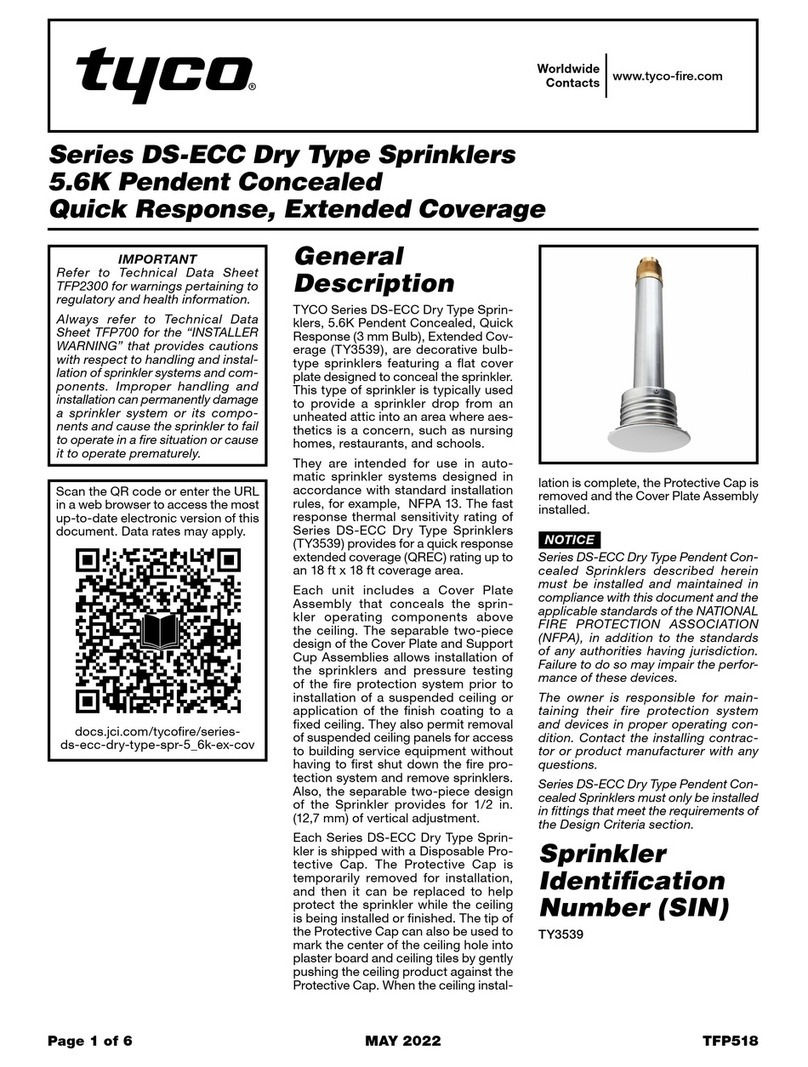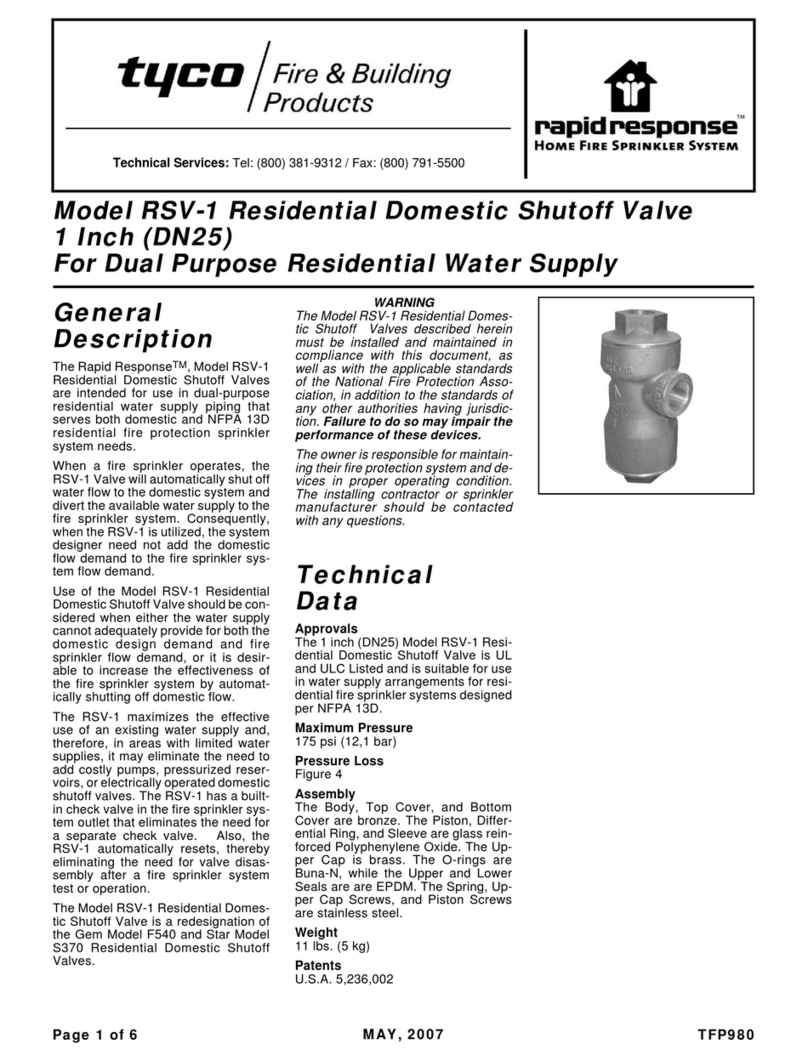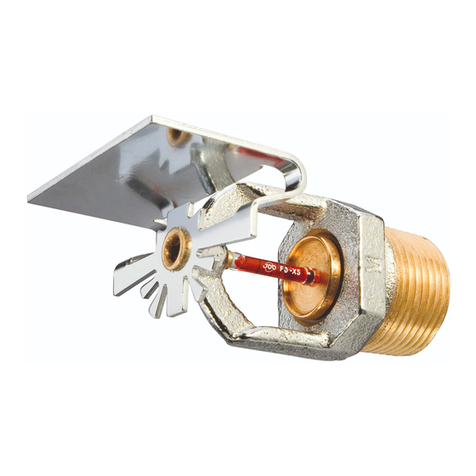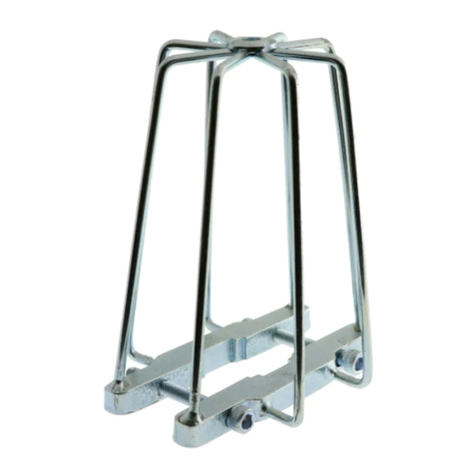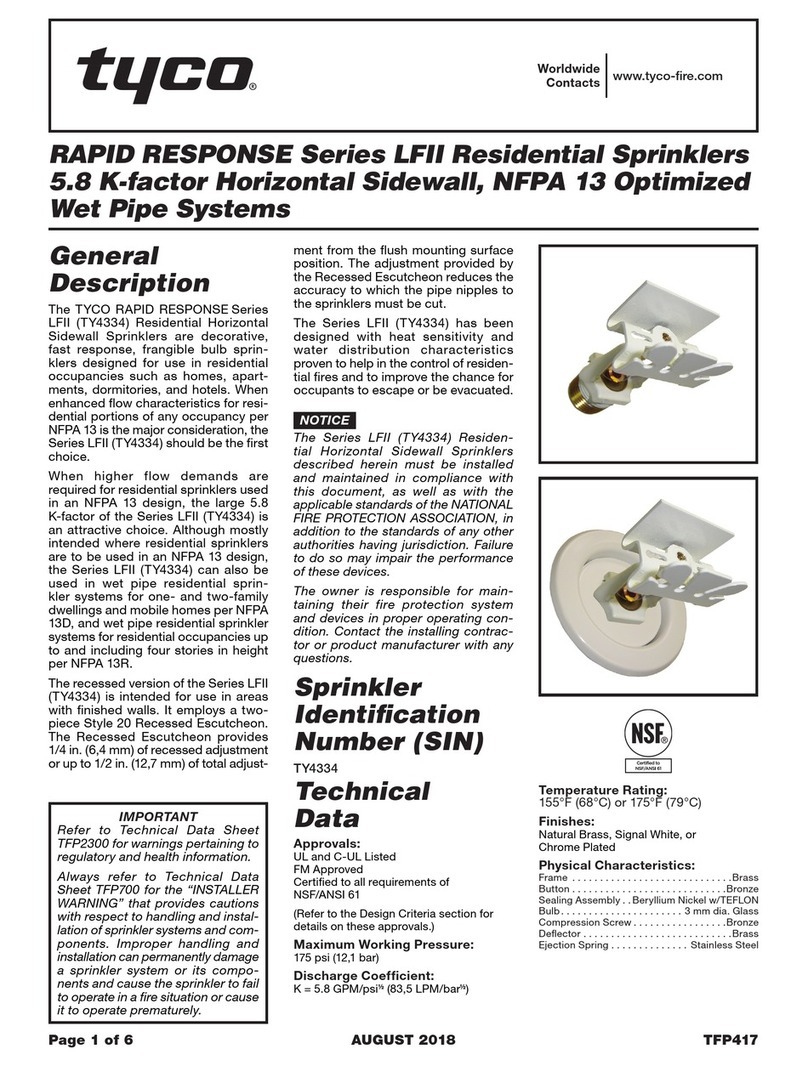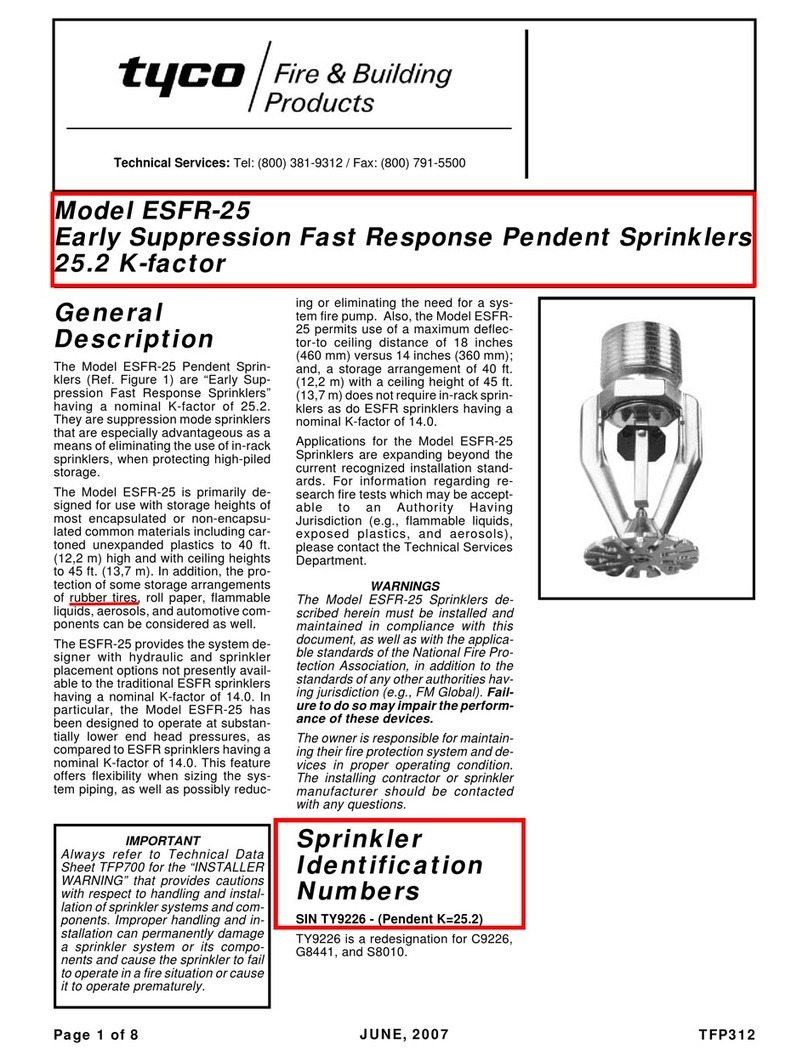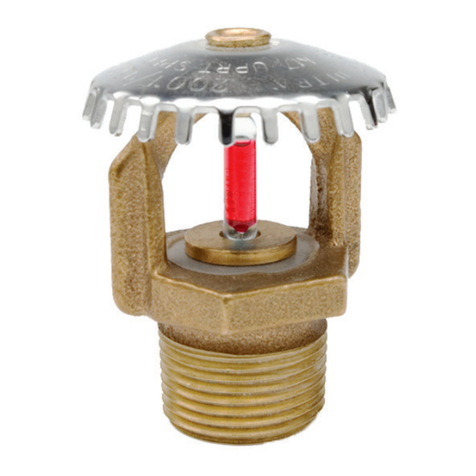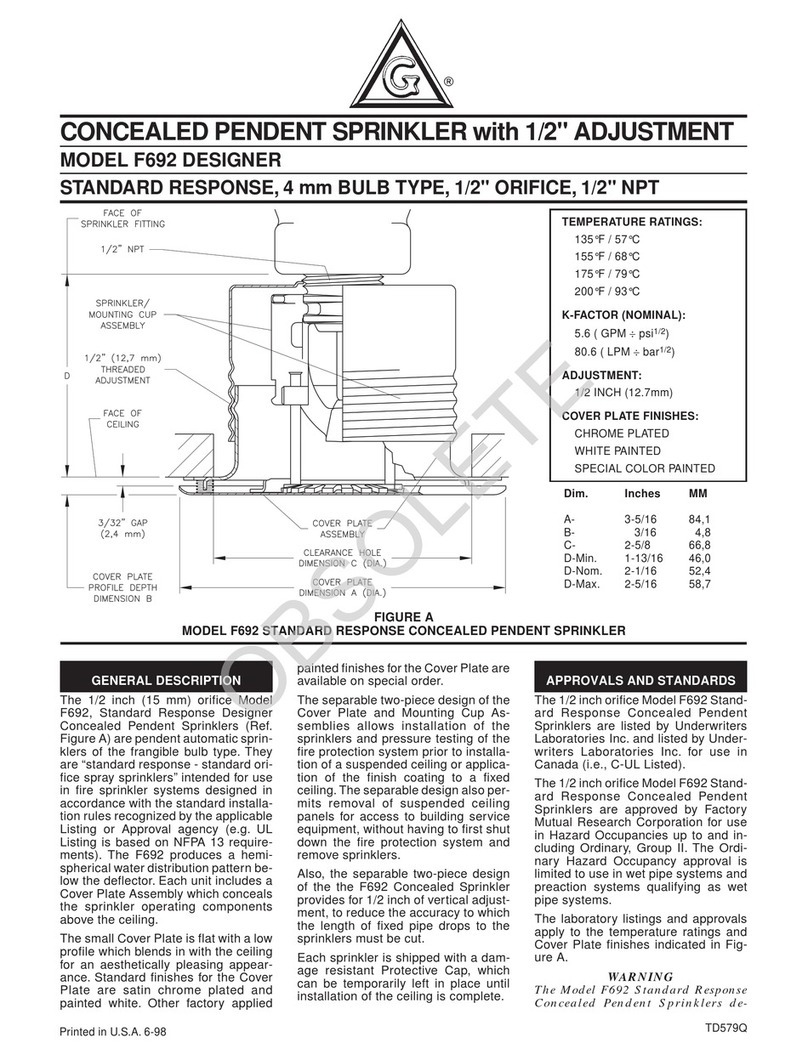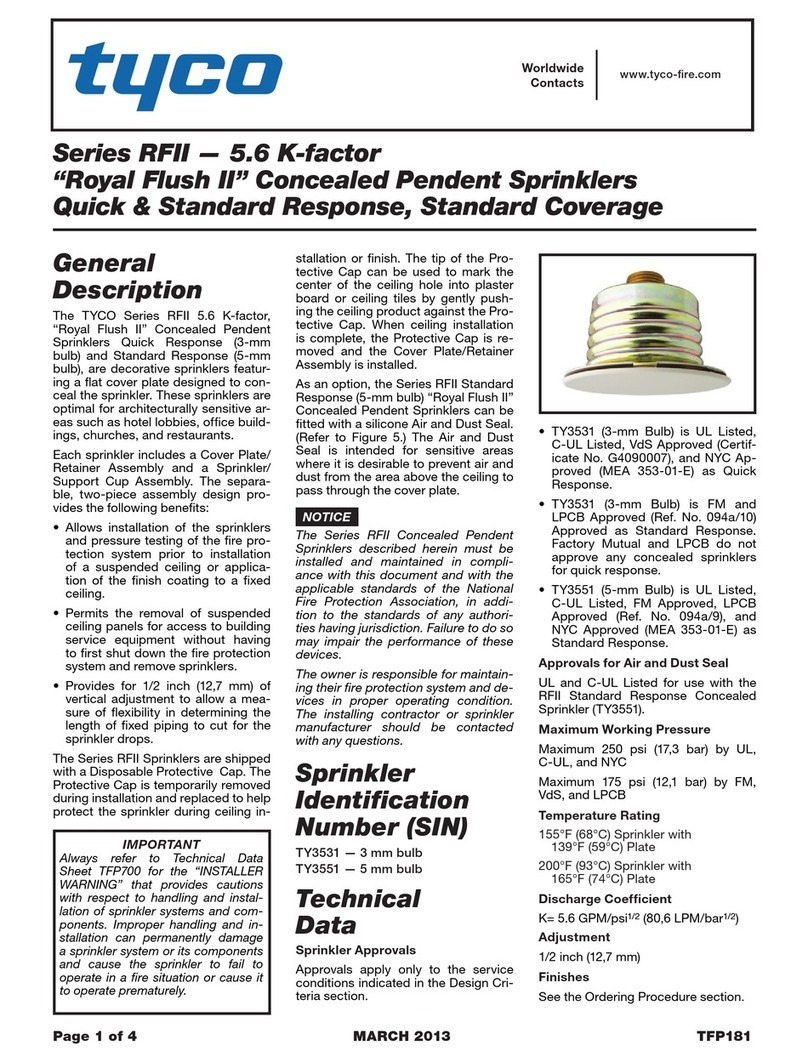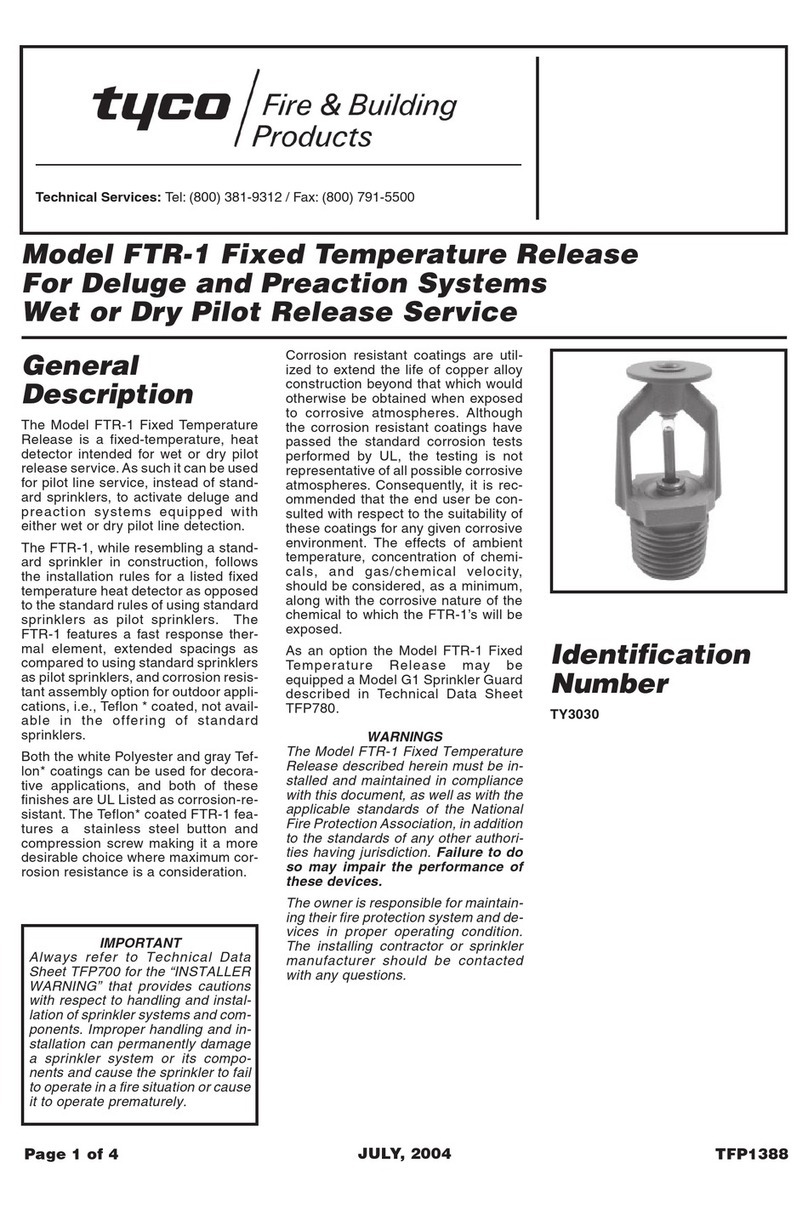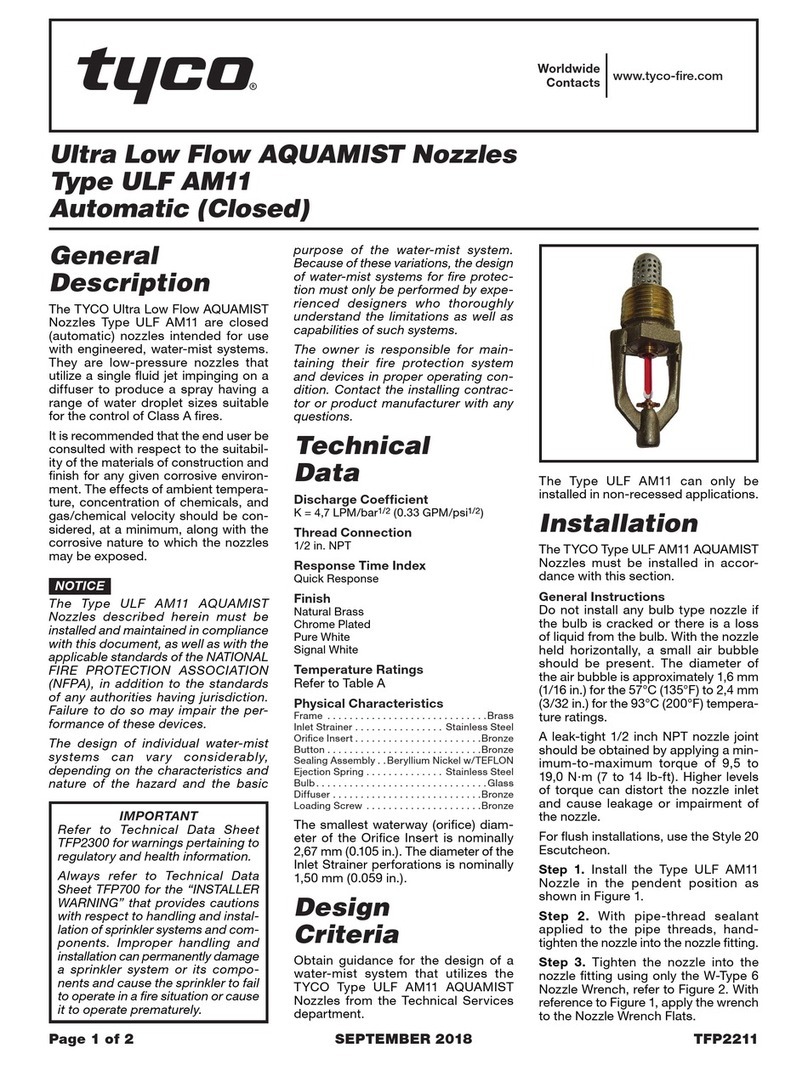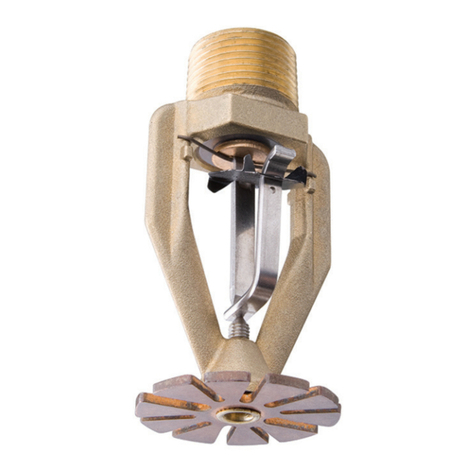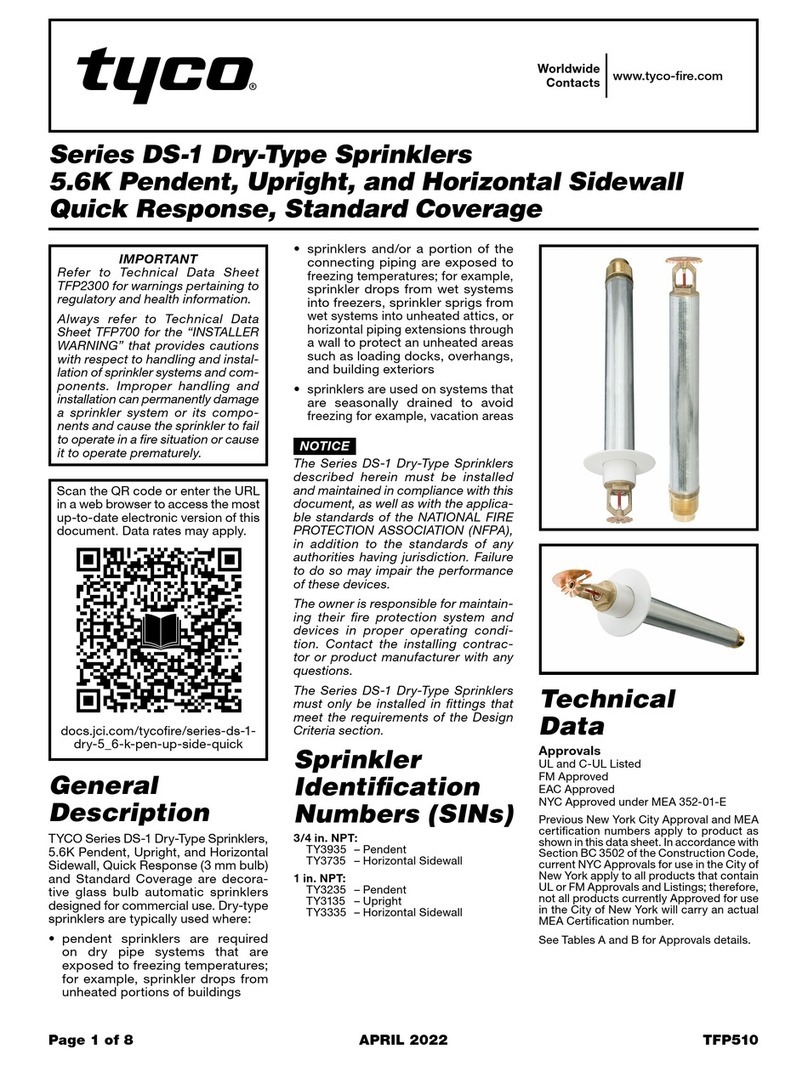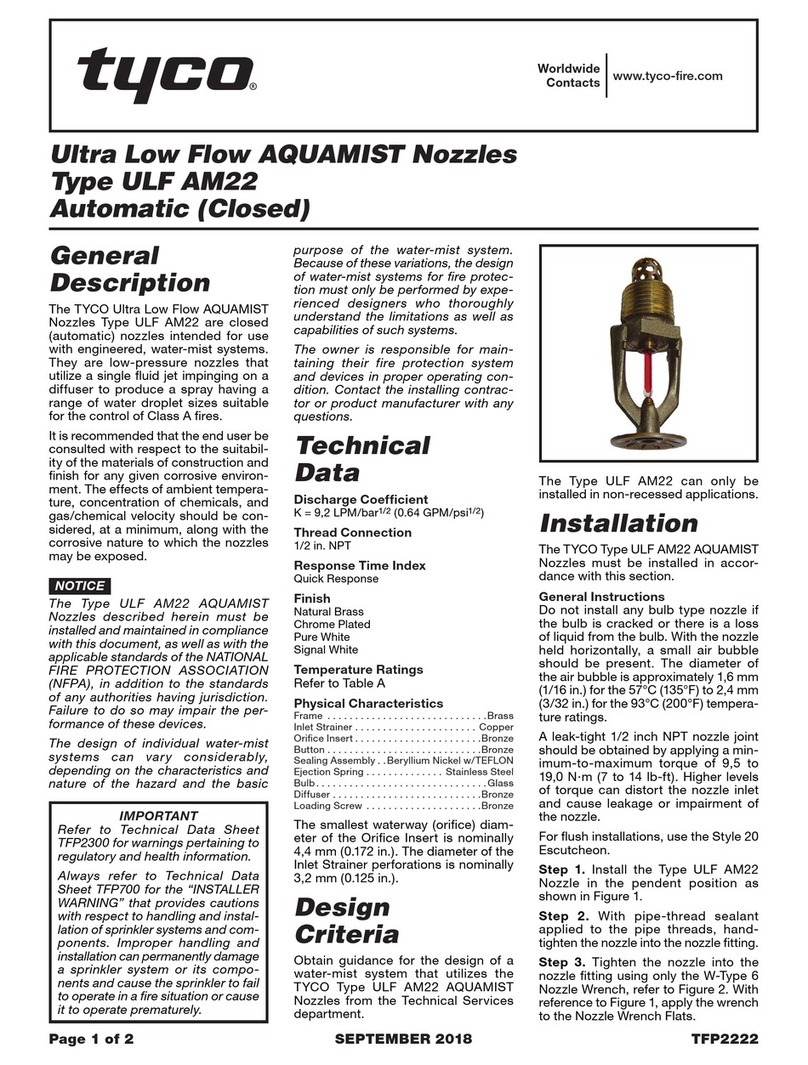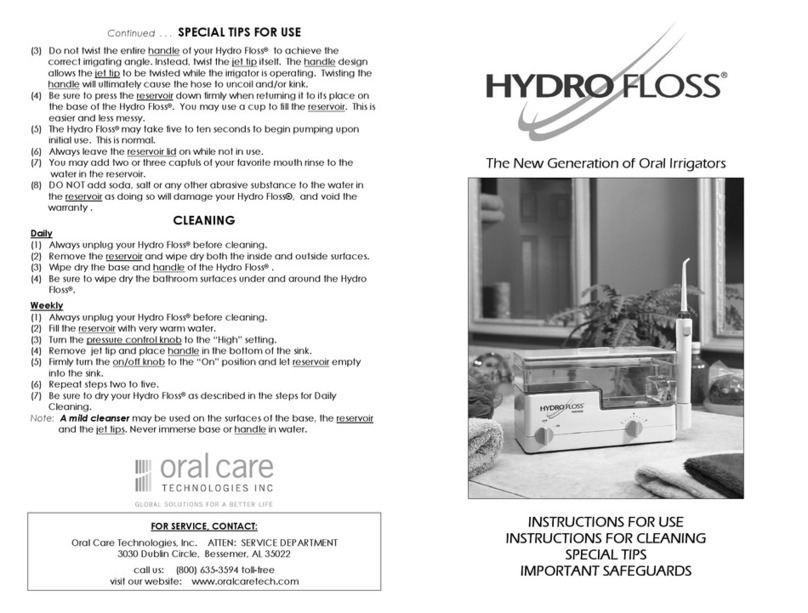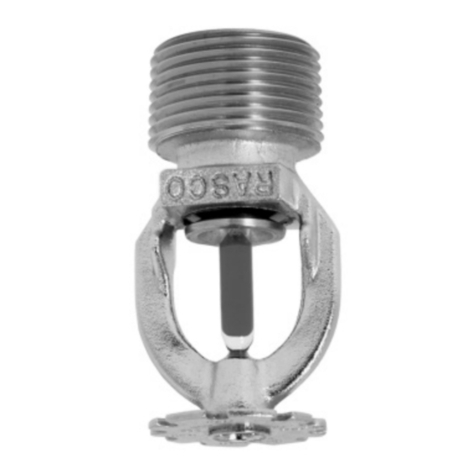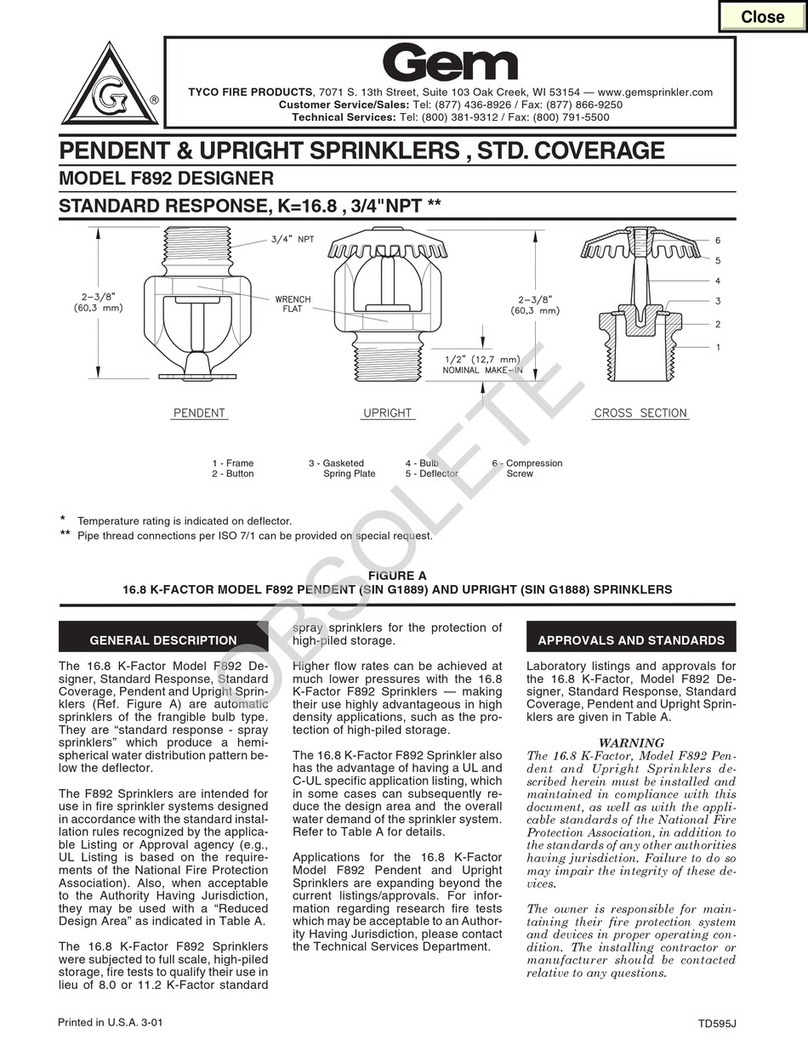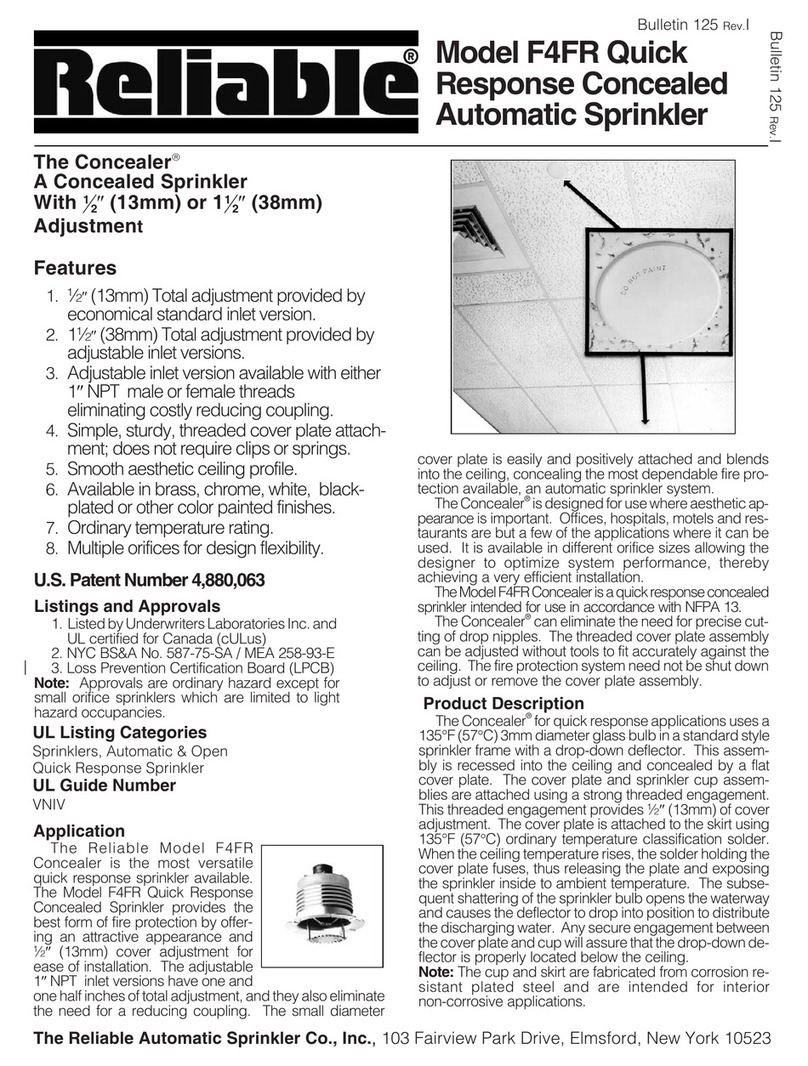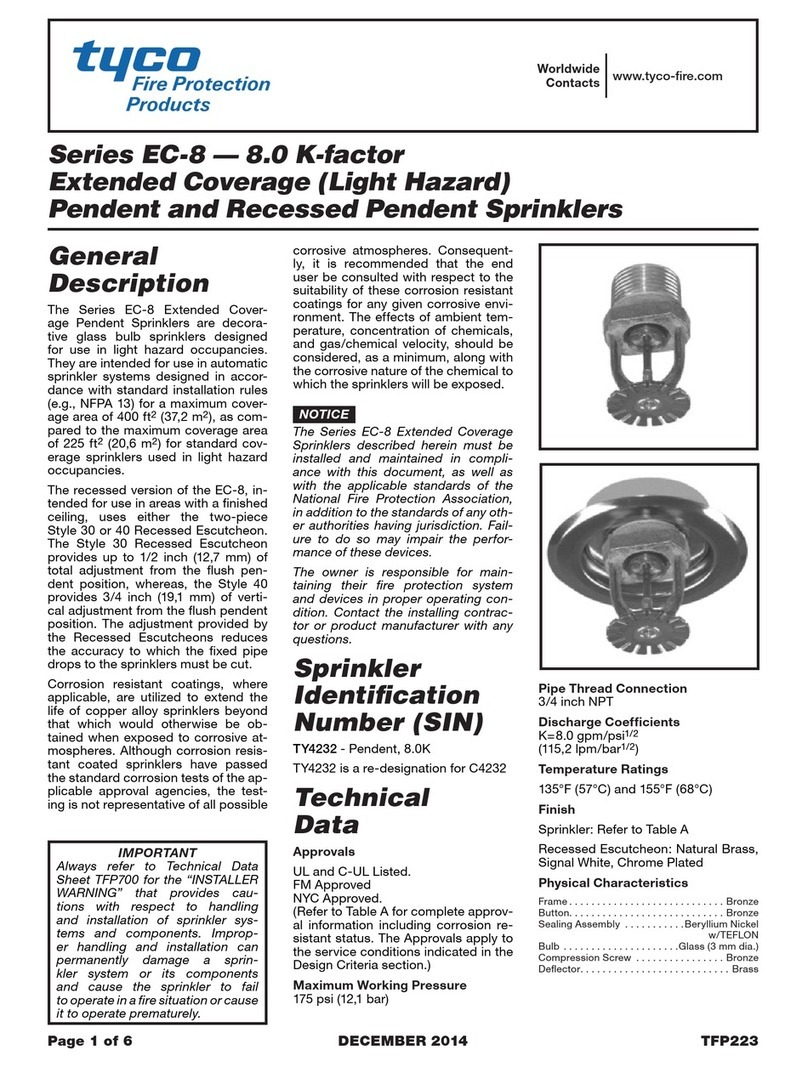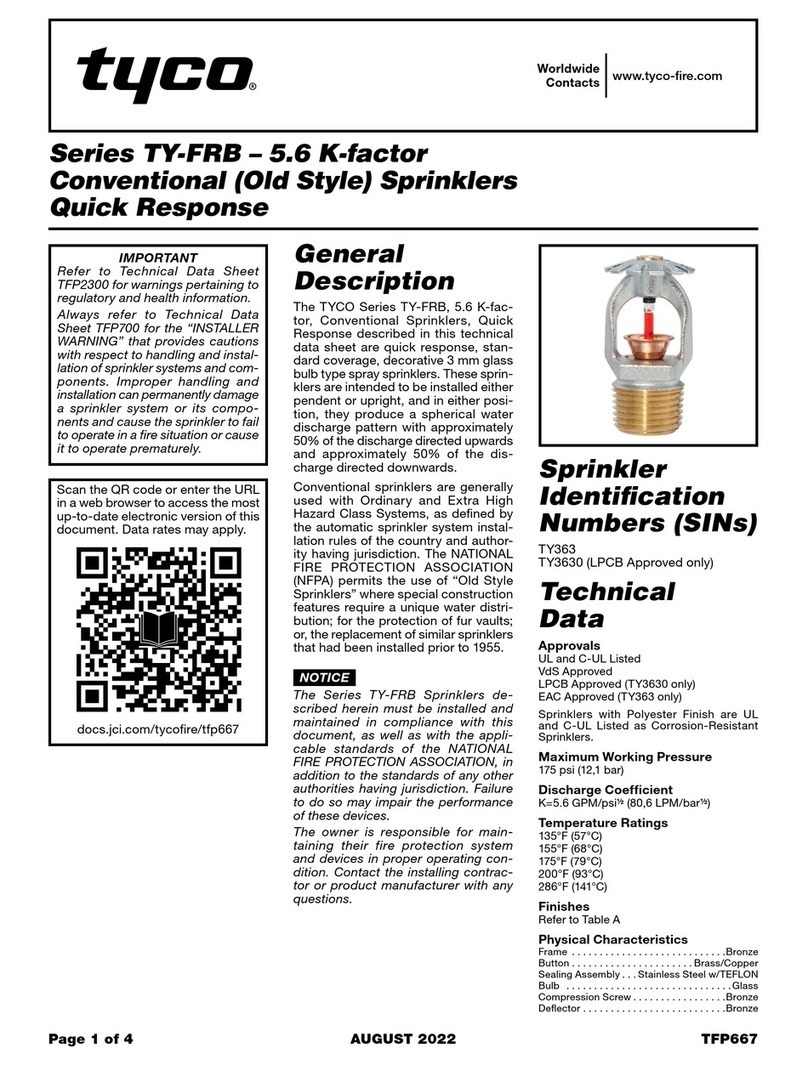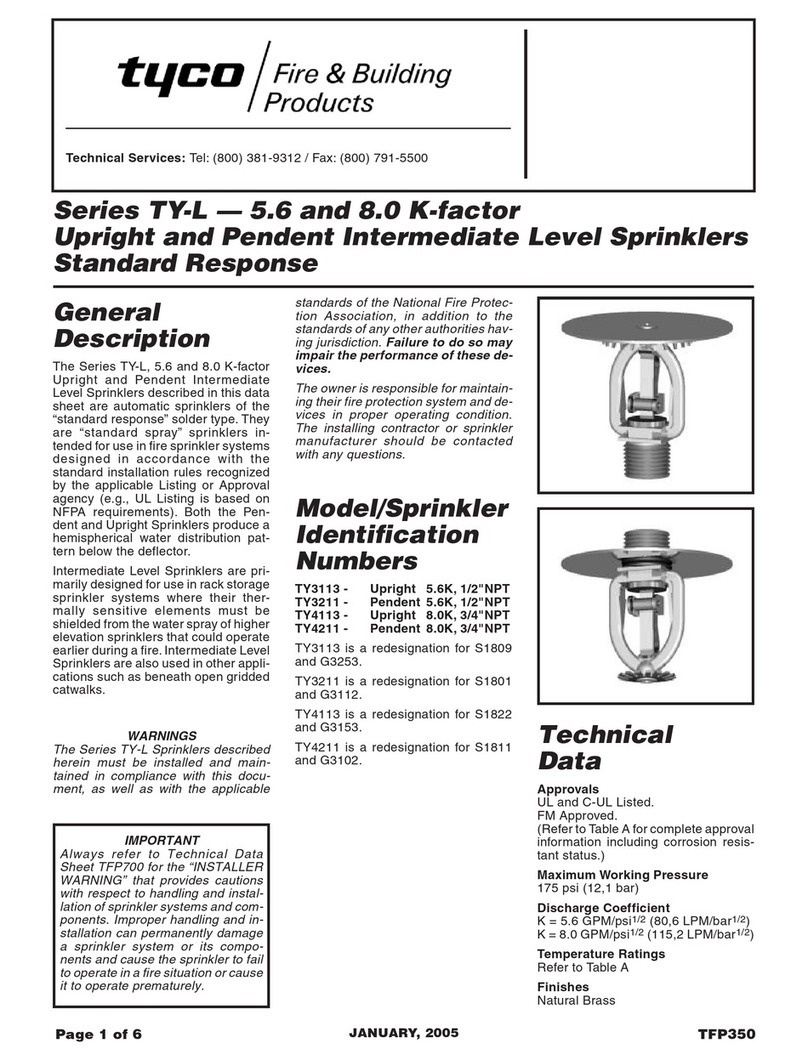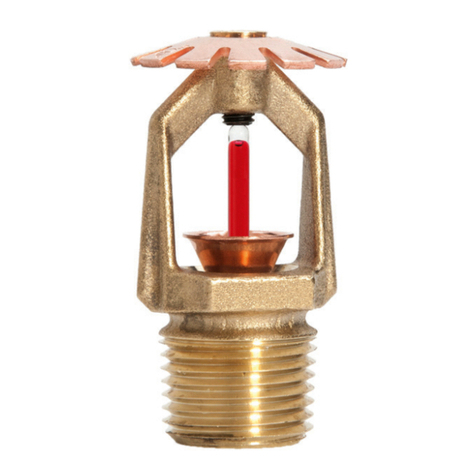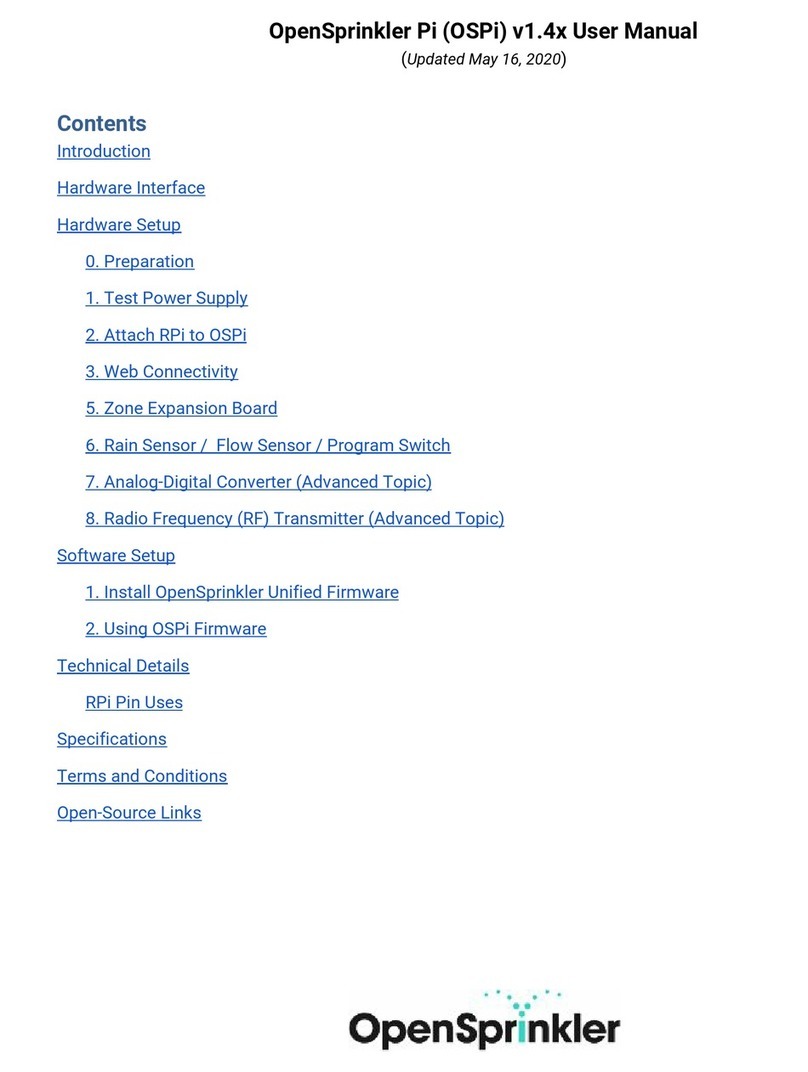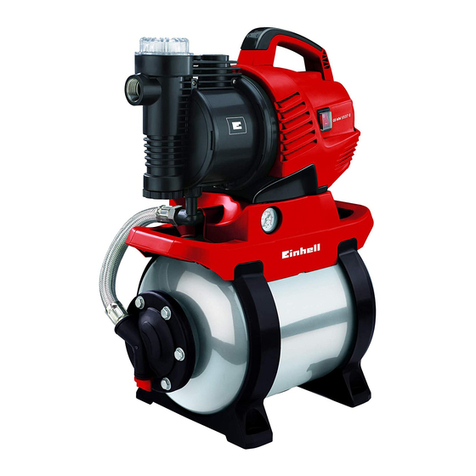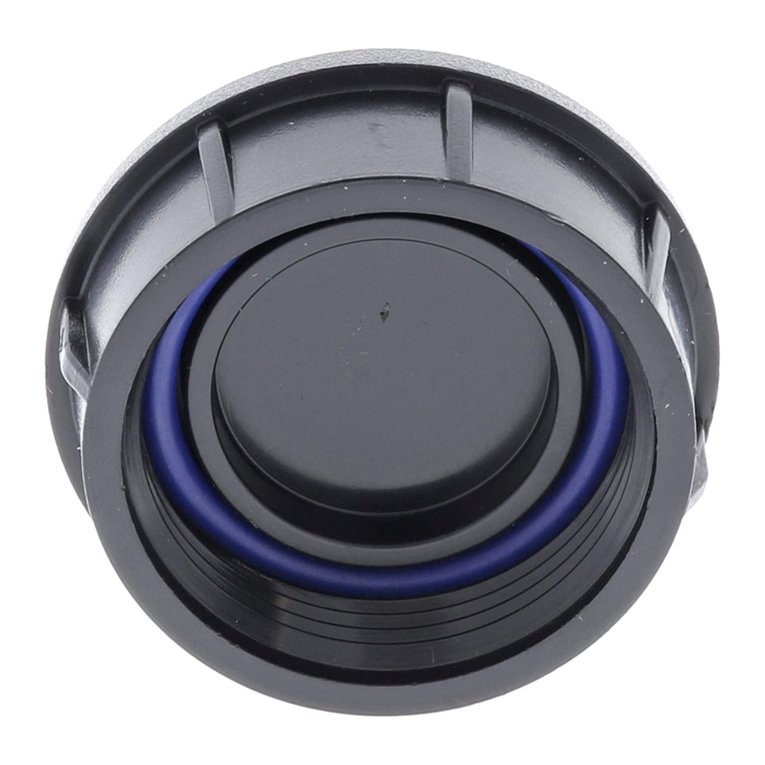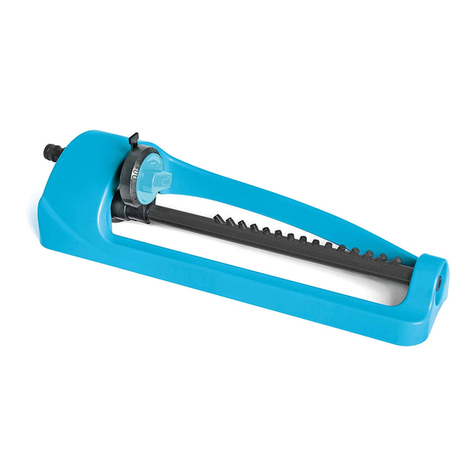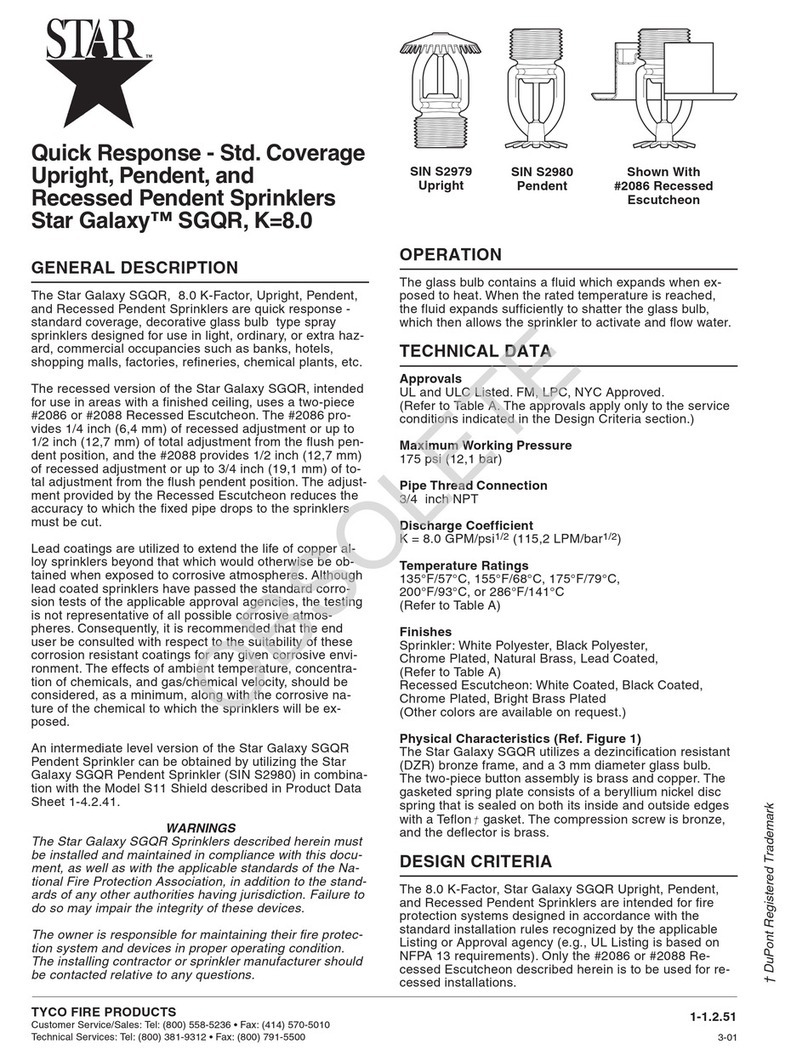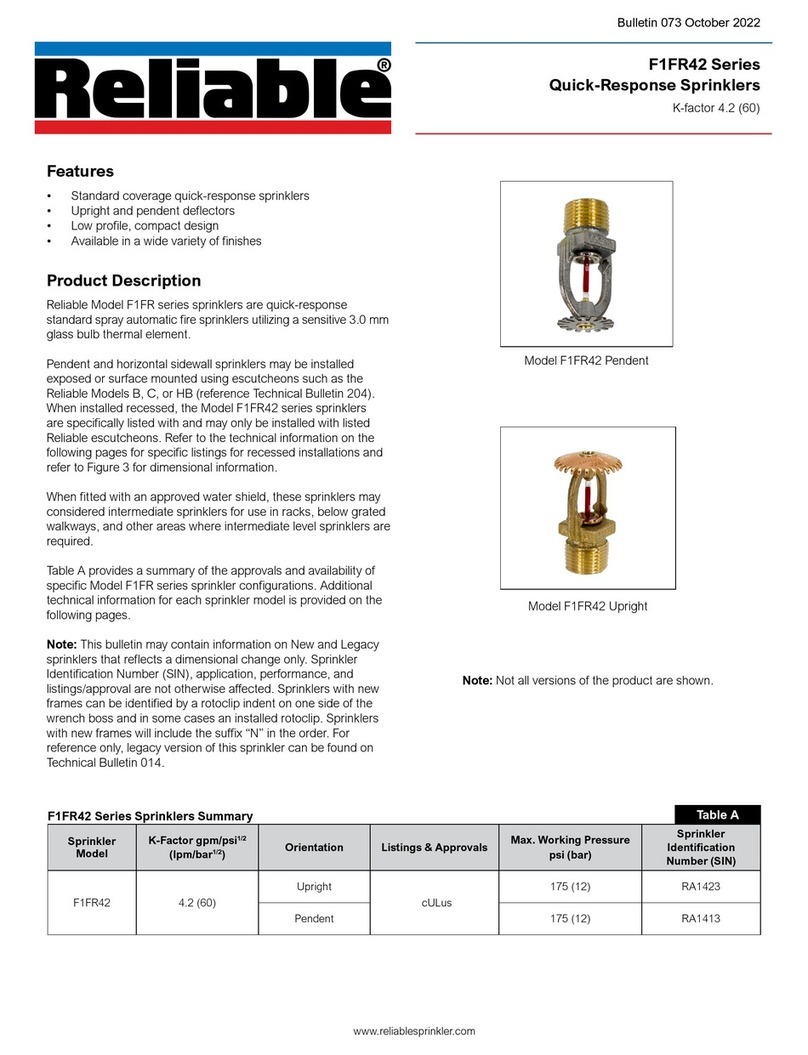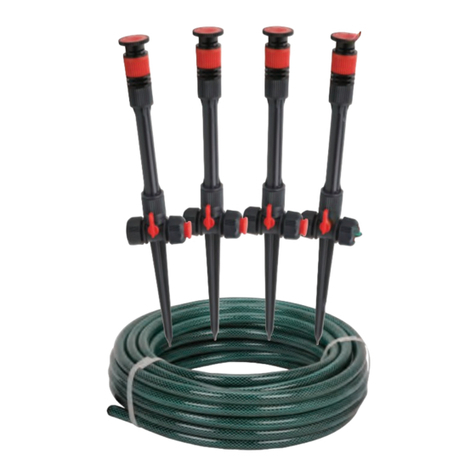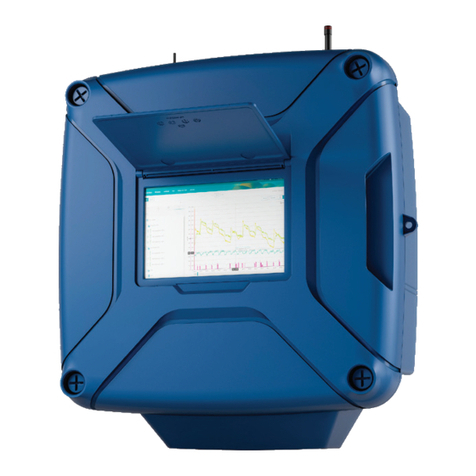
Page 4 of 6 TFP250
by gently pushing the ceiling material
against the center point of the Protec-
tive Cap.
NOTIce
As long as the Protective Cap remains
in place, the system is considered to
be “Out of Service”.
Step 6. After the ceiling has been
completed with the 2-1/2 inch (63,5
mm) diameter clearance hole and in
preparation for installing the Cover
Plate Assembly, remove and discard
the Protective Cap, and verify that the
Deflector moves up and down freely. If
the Sprinkler has been damaged and
the Deflector does not move up and
down freely, replace the entire Sprin-
kler assembly. Do not attempt to mod-
ify or repair a damaged sprinkler.
Step 7. When installing an Air and
Dust Seal, refer to Figure 4, otherwise
proceed to Step 8. To attach the Air
and Dust Seal, verify the angle of the
outside edge of the seal is oriented ac-
cording to Figure 4. Start the edge of
the Retainer in the grooved slot of the
Air and Dust Seal and continue around
the retainer until the entire Air and Dust
Seal is engaged.
Step 8. Screw on the Cover Plate/Re-
tainer Assembly until the Retainer Fig-
ure 2 (or Air and Dust Seal -Figure 4)
contacts with the ceiling. Do not con-
tinue to screw on the Cover Plate/Re-
tainer Assembly such that it lifts a ceil-
ing panel out of its normal position. If
the Cover Plate/Retainer Assembly
cannot be engaged with the Support
Cup or the Cover Plate/Retainer As-
sembly cannot be engaged sufficient-
ly to contact the ceiling, the Sprinkler
Fitting must be repositioned.
Care and
Maintenance
The Tyco®Model ELOC must be
maintained and serviced in accordance
with the following instructions:
NOTIce
Absence of the Cover Plate Assembly
may delay sprinkler operation in a fire
situation.
When properly installed, there is a
nominal 3/32 inch (2,4 mm) air gap be-
tween the lip of the Cover Plate and
the ceiling, as shown in Figure 2. This
air gap is necessary for proper opera-
tion of the sprinkler. If the ceiling is to
be repainted after the installation of
the Sprinkler, care must be exercised
to ensure that the new paint does NOT
seal off any of the air gap.
Factory painted Cover Plates MUST
NOT be repainted. They should be re-
placed, if necessary, by factory paint-
ed units. Non-factory applied paint
may adversely delay or prevent sprin-
kler operation in the event of a fire.
Do not pull the Cover Plate relative to
the Enclosure. Separation may result.
Before closing a fire protection sys-
tem main control valve for mainte-
nance work on the fire protection sys-
tem that it controls, permission to shut
down the affected fire protection sys-
tem must be obtained from the prop-
er authorities and all personnel who
may be affected by this action must be
notified.
Sprinklers that are found to be leaking
or exhibiting visible signs of corrosion
must be replaced.
Automatic sprinklers must never be
painted, plated, coated or otherwise
altered after leaving the factory. Modi-
fied or over-heated sprinklers must be
replaced.
Care must be exercised to avoid dam-
age to the sprinklers -before, during,
and after installation. Sprinklers dam-
aged by dropping, striking, wrench
twist/slippage, or the like, must be
replaced.
If a sprinkler must be removed, do not
reinstall it or a replacement without re-
installing the Cover Plate Assembly.
If a Cover Plate Assembly becomes
dislodged during service, replace it
immediately.
The owner is responsible for the in-
spection, testing, and maintenance of
their fire protection system and devic-
es in compliance with this document,
as well as with the applicable stan-
dards of the National Fire Protection
Association (e.g., NFPA 25), in addition
to the standards of any other authori-
ties having jurisdiction. The installing
contractor or sprinkler manufacturer
should be contacted relative to any
questions.
Automatic sprinkler systems should be
inspected, tested, and maintained by a
qualified Inspection Service in accor-
dance with local requirements and/or
national codes.
FIGURe 4
OPTIONAL AIR AND DUST SeAL FOR MODeL eLOc (TY5522)
COVER
ASSEMBLY
RETAINER
PLATE
SPRINKLERSUPPORT
CUP CEILING
FACE OF
SHOWN
SEAL
ORIENT
BEVEL AS
AIR
SEAL
AND DUST
LIP OF
RETAINER
COVER
PLATE
